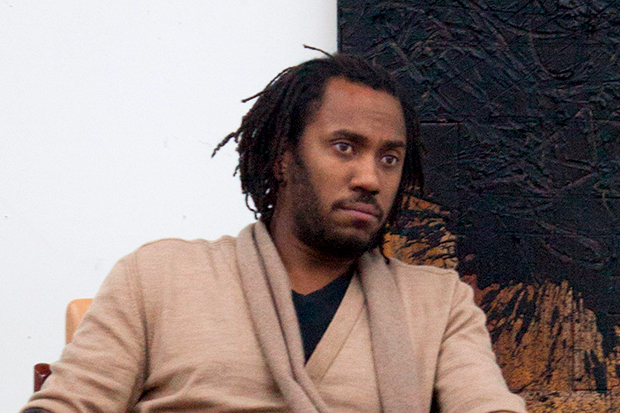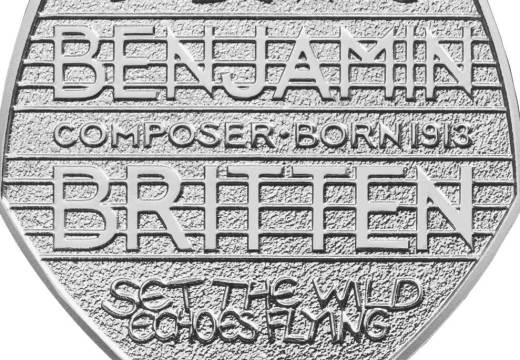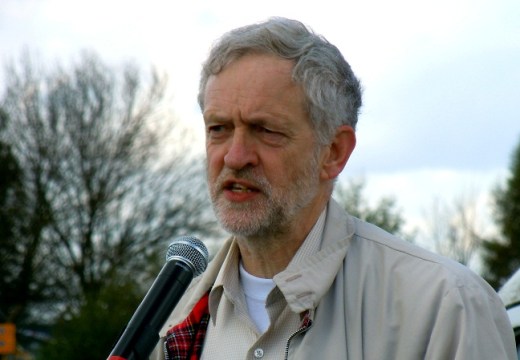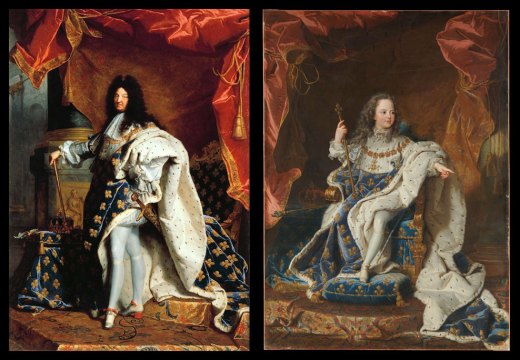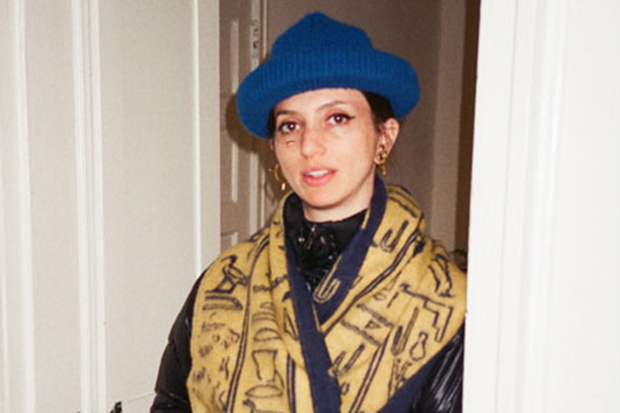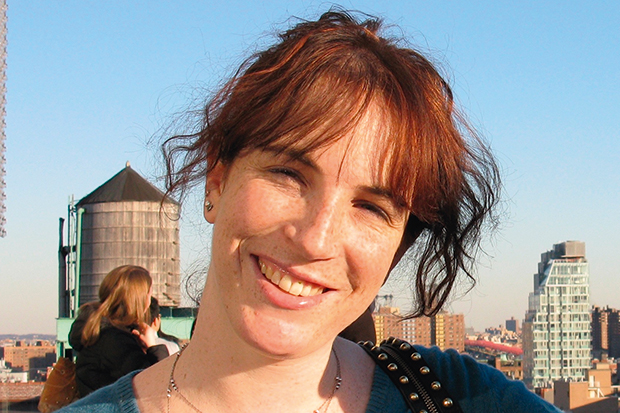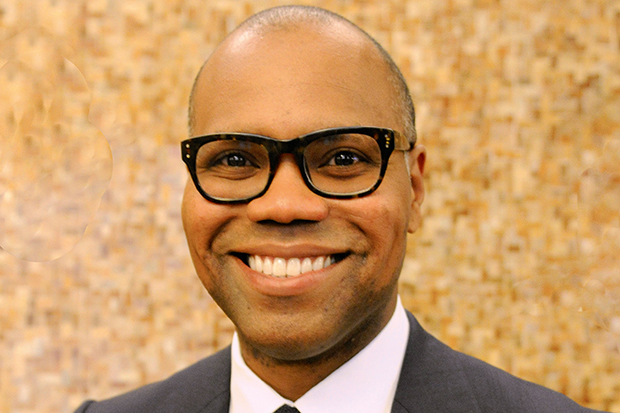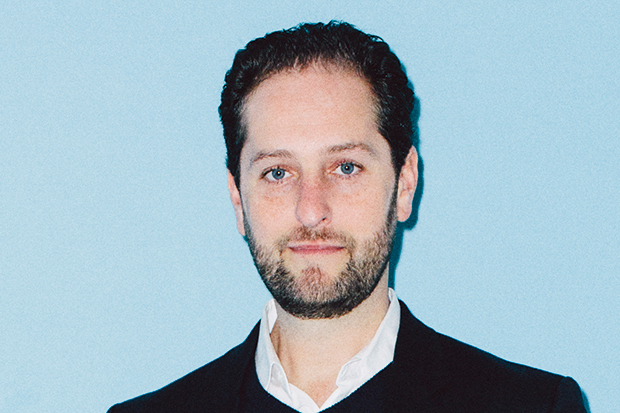The most striking exhibit in Rashid Johnson’s recent solo show, ‘Smile’, at Hauser & Wirth in London was the wallpaper. The walls of one section of the gallery were covered in a repeating print of a notoriously ambiguous photograph by Elliott Erwitt: a 1950 portrait in which a black boy from Pittsburgh holds a toy gun to his right temple, beaming as he does so. On the walls hung rectangular bronze panels, with sections cut out of them, and splashed in places with the mixture of black soap and wax that Johnson often uses. In the middle of the room stood Fatherhood: a sculpture consisting of a frame of steel cubes, on which Johnson had placed houseplants, books, and busts made of shea butter (another favourite material). Beyond a partition wall hung a series of black soap and wax paintings on white ceramic tiles, called Untitled Anxious Men.
The Chicago-born, Brooklyn-based artist has a knack for creating eerie, quasi-domestic environments – of ‘hijacking the domestic’, as he puts it; the mishmash of unorthodox materials and traditional artistic forms is typical of his work. The bronze works have a personal association. They derive from a ritual of his mother’s, which was to bronze her children’s shoes – a popular custom in the 1970s and ’80s, he explains. And when he stumbled across the Erwitt image, he realised it was the glue for the show: ‘I was thinking about the boy and about my childhood, and about memory production and anxiety and trying to put all those things together.’
Johnson’s formal training – first at Columbia College, Chicago, then at the Art Institute of Chicago – was in photography. Since then, he has become a conceptual artist who is as interested in the individual objects he creates as in the overall effect they produce. ‘I’m very interested in the making of my work as objects,’ he explains. ‘It’s a very important aspect of how things come to life for me…More often than not I’ll have an idea and then seek out the material that illustrates it. I don’t feel the need to use oil paint exclusively, or silver gelatin for photographs.’
In 2012, Johnson had a solo exhibition in his hometown, at MCA Chicago, which presented his preoccupations of the previous 14 years in objects that blended the personal with themes from black American history. In the same year, Johnson’s first solo exhibition in the UK, ‘Shelter’ at the South London Gallery, drew on the same sources. Bringing together his interests in the history of postcolonial African countries and in psychotherapy, Johnson asked himself, ‘What would it look like if Mobutu Sese Seko were to get Freudian analysis? What would that space look like? What would that daybed look like? Sometimes I will just produce funny questions and then use the artwork as an opportunity to illustrate those questions.’
For all the playfulness, there’s an undeniably serious undertow to his work. Johnson is an artist who is interested in anxiety and fear, and contemporary American society – the relations between police and black men in particular – gives him plenty to be anxious about and explore. ‘We’re best when we admit [fear] exists,’ he says.
Fatema Ahmed
Unlimited access from just $16 every 3 months
Subscribe to get unlimited and exclusive access to the top art stories, interviews and exhibition reviews.

